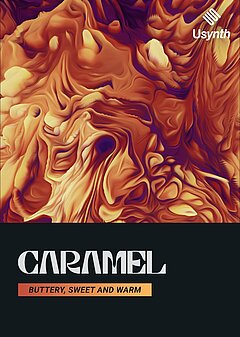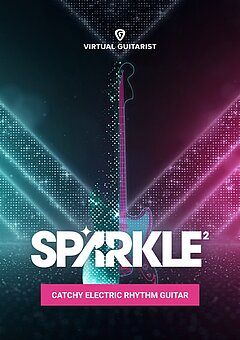How to Write Emotional EDM
Composition and production techniques for creating songs that connect with your listeners on a deeper level
FEBRUARY 19TH, 2023
Production style
Every element of a song contributes to the feeling listeners have, which is why production styles vary so heavily across genres and even sometimes between songs on an album (e.g. a rock album with a mixture of heavy songs and ballads). This is the same reason why if your goal is to produce a heavy dubstep track, there’s a good chance you’ll want heaping amounts of hair-raising distortion ... and it’s also why you can’t take the same approach when creating more emotional styles of EDM.
While it might feel like a stereotype, you can get pretty far with using sounds like glistening or glassy ambiences to soften the emotional feel of a song or low pass your pads and strings to evoke an eerie feeling, which you can create quite easily with Usynth CARAMEL. Timbre matters, which you’ll be intimately familiar with if you feel nostalgia when you listen to 8 bit or chiptune music from the classic gaming days — that’s why so many producers consciously use simple square and triangle waveform arrangements in EDM!
So what does this mean for you practically? Your sound selection, instrumentation, use of distortion, reverb, even EQ and compression choices will need to change depending on the emotions you want to convey. For example, ‘sadness’ might mean soft, gently swelling organic pads playing minor chords; the word organic here is important, as a more generic or digital sound won’t achieve the desired effect. If you’re going for ‘overjoyed’, then bright and lively sounds like high string staccato will help a ton. Anger? Simple: lots of distortion on huge supersaw stacks or virtual electric guitars with tight, clean percussion and backgrounds — if everything is distorted, your mix might lack the precision needed to convey those feelings.
Is this too simplified? Of course; it’s just a means to get you started. Your interpretation of different emotions is what listeners connect with. The key takeaway is that emotion is built through these micro decisions, rather than a single stylistic choice.
Focus on chords and melody
With conventional bass music, you can often get away with treating melody and harmony as an afterthought in favor of focusing your energy on the groove and bass design — when you’re going for emotion though, a solid understanding of music theory fundamentals is essential. Otherwise it’s easy to cheapen the quality of a song and make it sound too simplistic; you don’t need to be an expert, but there are certain things you’ll want to keep in mind.
Number 1 is to write lyrical melodies with plenty of contrary motion and adjacent notes ... which is simply a fancy way of saying that the notes should flow easily and frequently move “away” from the movement of the chords underneath. Parallel motion, where the melody and chords move up and down together, creates a very simplistic sound rather than real emotion; a little complexity and intrigue goes a long way, and finding small ways to surprise and delight listeners is key.
Also for chords, unless there’s a specific song you want to emulate (not copy, of course), it’s better to get your inspiration from outside of EDM — orchestral music, rock ballads and world music are just a few examples of where to start looking, and bringing in qualities of other genres that traditionally lend themselves to more emotional writing is a great way to bring those feelings to your own music without falling into ruts or shortcutting the composition process.
Drops
If you want to make your songs hit in more ways than just getting your listeners grooving, your drops can’t simply be about the bass, kick and snare. This is something the ‘color bass’ genre does really well, and often with very low effort; if you aren’t familiar with the genre, imagine dubstep but with focus on harmony and an overall shimmering quality. The primary transformation of the bass sound into something richer can be achieved with (often expensive) pitch quantization plugins like Pitchmap, convolution reverbs using bell-like samples, or tuned resonators like Rezonator set to a specific chord. Au5’s Cryptochrome is a perfect example of this sound:
The emotion factor isn’t limited to feelings like nostalgia or sadness, either — awe is a great one to explore, and one of the most effective ways to achieve it is via contrast. For example, you could use a huge, relatively normal build, but the drop itself might be extremely minimalist, with only sparse elements that each pack a huge punch on their own. If the response you elicit is an emphatic “wow”, you’ve done your job right! Very few producers explore the concept of negative space, where silence feels more powerful because of an intense period of time before it; using silence and limiting the arrangement unexpectedly (and tastefully) is a great way to force your listeners to stop and marvel at your work.
There’s no rule stating that a drop has to follow any specific requirements, so you can also treat it as a bridge where you introduce new melodic and harmonic material with some added excitement and a fuller arrangement. Plenty of future bass songs do this quite well, and if your writing chops are solid it can even free you up from having to spend tons of time on bass sound design with tons of layers and cuts. And if it’s a challenge, this might be the perfect way to expand your ability to write and produce emotional EDM!
Wrapping up
Everyone’s musical interpretation of different emotions is different, which is exactly what makes music so rewarding. It’s valuable to note how artists commonly evoke certain emotions, but this should only be a reference point; the way you express them through music will help distinguish you, especially if you apply this idea to EDM like few producers currently do.
So don’t hold back, and be sure to convey emotions through your music the way you feel them ... the people who latch on are your true followers, and the more attention you give to the small details that make those emotions come alive between chordal, melodic, production and sound design choices, the stronger your relationship with your fans can become!
About the Author
Harry Lodes is a copywriter, marketing consultant and content writer for audio and ecommerce brands. He lives in the Philadelphia area, releasing Eastern/Western hybrid EDM under the artist name KAIRI hearkening back to his roots in Berklee College of Music.
Stay up to date
Sign up and we’ll send you an e-mail with product news and helpful stuff every now and then. You may unsubscribe at any time.
Defy Limits
We develop software solutions that enable people to create, consume and interact with music.





